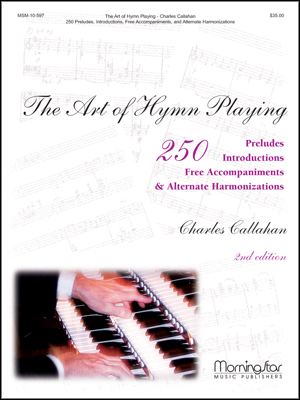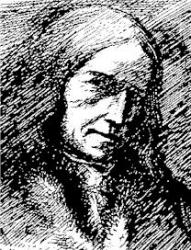Gott ist gegenwärtig. G. Tersteegen. [Public Worship.] Appeared in his Geistliches Blumengärtlein, 1729, as No. 11, in Book iii., in 8 stanzas of 10 lines, entitled, "Remembrance of the glorious and delightful presence of God." It passed into Zinzendorf’s Geist-und liebliche Lieder, 1731, No. 1139, has attained a wider use than any other of Tersteegen's hymns, and is found in most recent collections, as in the Unverfälscher Liedersegen, 1851, No. 559. It is a poetical reflex of his inner nature, a beautiful expression of the characteristics of his peculiar vein of mystical piety. Lauxmann in Koch, viii. 355, calls it "A hymn of deepest adoration of the All Holy God, and a profound introduction to blessed fellowship with Him." Translated as:—
1. Lo, God is here! Let us adore, by J. Wesley, in Hymns & Sacred Poems, 1739 (Poetical Works, 1868-72, vol. i. p. 167), a translation catching the spirit of the original, but rather free, in 6 stanzas of 8 lines, and omitting stanzas vii., viii. Included in the Wesleyan Hymn Book ,1780, No. 481 (1875, No. 494). The full text is in Mercer's Church Psalm & Hymn Book, 1857 and 1864; but it is generally found in centos. The most important are:—
i. In the original metre.
(1) Stanzas i., ii., iv., as in the Mitre Hymn Book, 1836; Bickersteth's Christian Psalmody, 1841; American Methodist Episopal Hymn Book, 1878, &c. In the Swedenborgian Collection, 1824 and 1880, and others, this cento begins, "The Lord is here! Let us adore."
(2) Stanzas i.-iv. as in the Leeds Hymn Book, 1853; Baptist Psalms & Hymns, 1858; Hymnal Companion, 1870; Hymns & Songs of Praise, N. Y., 1874; Horder's Congregational Hymnal, 1884, &c.
(3) "Lo! God is here! Him day and night," beginning with stanza ii. in Elliott's Psalms & Hymns, 1835.
ii. In Long Metre.
(1) The most important form is of stanzas i., ii., iv., with lines 5-6 omitted. This is found in the Salisbury Collection, 1778; Wilberforce, 1832; Martineau, 1840; Cooke-Denton, 1853; the Society for Promoting Christian Knowledge Church Hymns, 1871. It is also extensively used in America, as in the Book of Hymns, 1846-8; Presbyterian Hymnal, 1874; Dutch Reformed Hymns of the Church 1869; Baptist Praise Book, 1871; Hymns & Songs of Praise, 1874, &c.
(2) In Kennedy, 1863, No. 1252, lines 1-12, are the above; while lines 13-24 seem to be added by Dr. Kennedy to adapt it for the Reopening of a Church or similar festivals.
2. The Lamb is slain, let us adore, by W. Delamotte, as No. 134 in the Moravian Hymn Book, 1742, and repeated in later eds. (1886, No. 656, reading "The Lamb was slain"). Mainly taken from Wesley's translation. Included in varying forms in J. A. Latrobe's Collection, 1841; in Walker's Cheltenham Collection, 1855; and Reid's Praise Book, 1872.
3. God reveals His presence, by F. W. Foster and J. Miller, as No. 813 in the Moravian Hymn Book, 1789 (1886, No. 649), being a good translation of stanzas i., ii., iv., vii., viii. The form in common use is that given to it by W. Mercer, in his Church Psalter & Hymn Book, 1855, No. 297 (Ox. edition, No. 426). He retained 13 lines as in the original translation, slightly altered 5, and re-wrote the rest (with little regard to the German), omitting stanza iv. altogether. This text is in J. L. Porter's Collection, 1876 ; Church Praise, 1883; Free Church Hymn Book, 1882 ; Irish Church Hymnal, 1873; New Zealand Hymnal, 1870; Laudes Domini, N. Y., 1884; Canadian Presbyterian Hymn Book, 1880, &c.
Translation not in common use:— "The Lord is here; then let us bow before Him," by Miss Dunn, 1857, p. 76. [Rev. James Mearns, M.A.]
--John Julian, Dictionary of Hymnology (1907)
==================
Gott ist gegenwartig, p. 444, i. Another cento in L.M. from J. Wesley's translation begins in the Savoy Hymnary (n.d.), "Our God is here! let us adore." It is compiled from stanzas i., ii. and iv.
--John Julian, Dictionary of Hymnology, Appendix, Part II (1907)


 My Starred Hymns
My Starred Hymns



